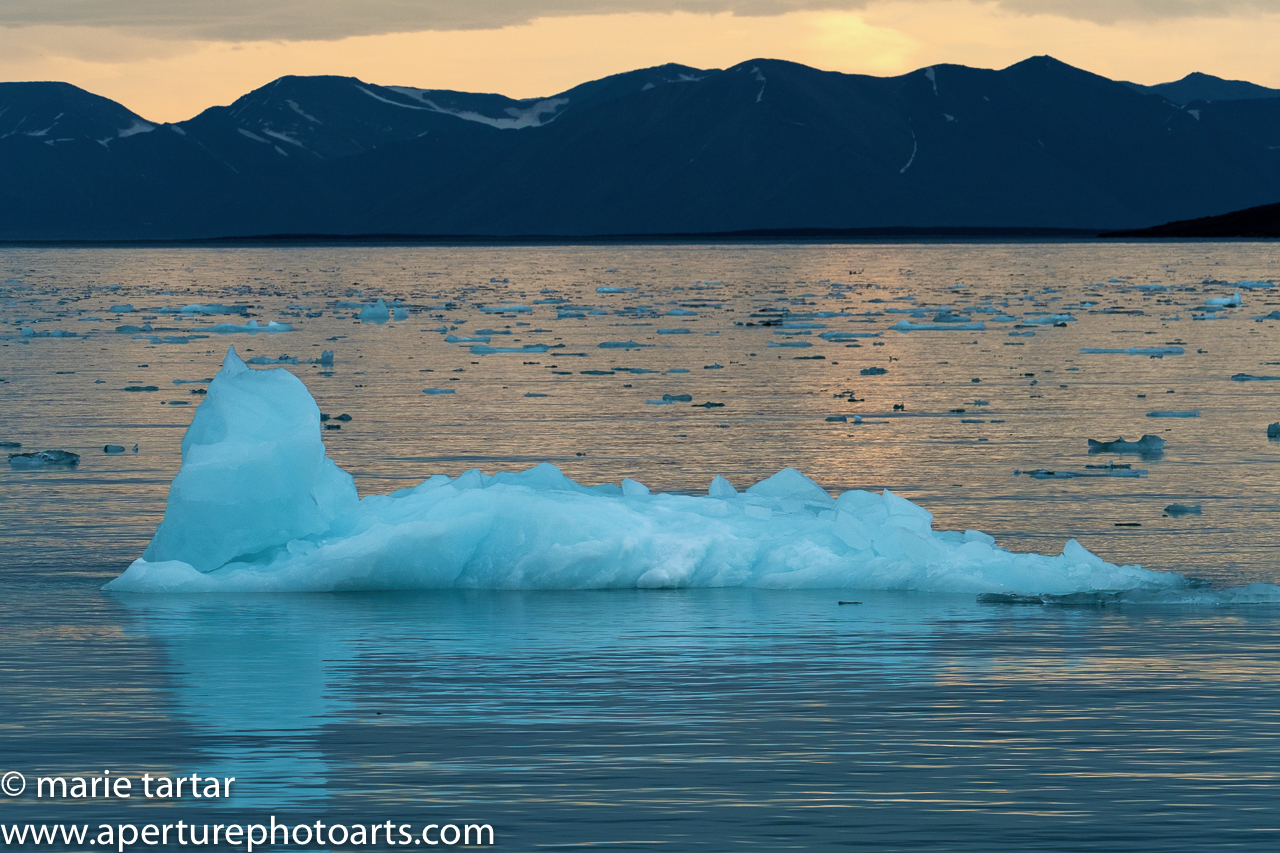
Saturday, September 2, 2017
By our first morning aboard Antigua, a converted sailing vessel and our home for the next 9 days as we partially circumnavigated Svalbard, a remote archipelago north of Norway in the Arctic Circle, I was more than ready for our first outing. This trip has been a long time in the planning, most of a year. The occasion (our excuse) was Steve’s 60th birthday the same month. Joining us were multiple long-time friends, fellow divers and wildlife enthusiasts, Lauren and Brad, Gerry and Nancy, Bob and Debbie, Greg and his girlfriend, Sarah.

What the well-dressed, 60ish, birthday celebrating Arctic explorer (Steve) is wearing this year: everything, topped off with a mandatory life preserver.
It had been a long and for many, a seasick miserable night, leaving Isfjorden. I had decamped to my bunk after dinner, with a Bonine from Lauren, fully clothed, unable even to brush my teeth. I woke up when Steve entered and asked him to hand me my dental floss. I clutched it until I next woke up, at 11:30 pm, feeling like I had slept for hours and finally feeling well enough to floss and brush my teeth. I crept around the cabin using a red light from my headlamp, trying not to wake Steve. I finished The Bastard of Istanbul, and started The Greybar Hotel. Eventually, I went upstairs to the salon, where I found Anita huddled in blankets on the banquet. She later woke up and said she couldn’t sleep in her room due to the cold, as the heat wasn’t working in her room.
We made a second landing in Norway’s northernmost scientific community, a former coal mine, Ny-Alesund. Given the cold, windy, sleety and generally inhospitable conditions, I found Nikita’s description of the history of this outpost overlong. I would have enjoyed it considerably more back on board the warm boat. Our departure for the walking tour was delayed by the hue and cry raised by Brad and Lauren at the store, discovering that Brad’s green boots were missing. I was sure this was a case of mistaken identity and that Brad’s would turn up back at the boat. It turned out the culprit was expedition leader Morten.
Sunday, September 3, 2017
The weather respite of the morning, with some sunlight finding holes in the clouds, gave way in the afternoon to a light rain. All afternoon, a smell we interpreted as chocolate chip cookies in the oven tormented us. Around tea time, the secret was revealed-a pair of birthday cakes. It turned out to be Lauren’s birthday.
Monday, September 4, 2017
We cruised east with the sails up overnight, north of Svalbard. Volunteers were solicited to help pull down the mainsail. A second polar bear was spotted. Shooting conditions were difficult-the bear was meandering on shore, lying down in a snow patch, later head buried in a whale carcass. The wind was gale force and cold.
Although the scenery is always beautiful, the conditions on deck weren’t always the most comfortable. Experience a taste of the wind here: https://vimeo.com/290194812
It was a lethargic, boring day, waiting for conditions to change.
After dinner, a film by and about Nikita Ovsyanikov and his multiple years of in-the-field polar bear research at Wrangel Island was screened. Each year, he would spend several months, alone, in a rudimentary cabin on a spit littered with whale carcasses, which attracted polar bears.
Tuesday, September 5, 2017
The landscape was austere and steely beautiful.
After dinner we were invited out on deck for a toast, marking our furthest passage north, to the 81st latitude. My progress in suiting-up was impeded by my boots going missing from the mudroom area. I’m sure the culprit, who wore them the rest of the evening, never even realized her mistake. I did make a point from then on to take my boots down to the cabin after doffing them upstairs. I now had more sympathy for Brad and Lauren’s dismay occasioned by the first case of The Missing Boots. Steve and I passed on walking on an iceberg.
Wednesday, September 6, 2017
Sunny and crisp, still and calm conditions enabled us to do an extended morning excursion on Lågøya Island. The light was initially diffused by a great arcing cloud, enveloping a still lagoon.
Here’s a video snippet to virtually be there: https://vimeo.com/290191167
Just before these walruses began bobbing about offshore, they were cozily piled up on the shore. Experience it here: https://vimeo.com/290191649
After lunch, the rocking commenced as we headed back west over the top of Svalbard. The salon emptied as most headed to their cabins trying to ward off sea-sickness. In the cabin, our coats on hooks traced an arc along the wall, back and forth, back and forth. Water splashed up periodically onto the porthole. Toiletries jumped the sink shelf barrier and slid across the floor. The trash can listed once too far, and crashed onto its side. Water from my hasty shower, taken right after lunch before we were underway, sloshed back and forth in the bathroom.
Toward dinner time, the seas had calmed enough that most everyone reemerged from their cabins and ate. While sitting in the salon tapping away at laptops, a call went out for help with the sails. By the time I went downstairs for my coat and appeared on deck, it seemed most of the work was done.
Another call, this one signifying the rise of a beautiful full moon, sent us in a rush downstairs for gear and coats. My shooting session was abruptly halted by a slosh of sea water.
Thursday, September 7, 2017 (Woodfjorden)
It was a very short night. Morten knocked on our doors at 2:30 am, announcing beautiful sunrise light. Steve answered the call, as did Brad, Greg, Bob, Gerry and much of the rest of the boat. I rolled over and continued to sleep. Around 3:30 am, Steve came back to the room for another lens and told me I really didn’t want to miss it. I asked groggily: “Is there a foreground” and was told “Yes, icebergs”. Recalling a similar middle of night Antarctic sunrise, this time I roused myself, bundled up and headed out on deck. He was right-the sky was a riot of sherbet striations.
I went back to bed after a while, but Steve stayed up. When he next returned to the room, he had launched the drone from the bow, but said it hadn’t gone especially well, losing communication periodically. He made it clear he was sweating bullets getting it back to the boat.
After breakfast, we were divided into 2 groups, by port and starboard side rooms. The starboard side group headed out in zodiacs, while the boat made a slow scenic cruise of the fjord fronting Monaco glacier.
When it came our turn towards 11 am, we (me, Greg, Sarah, Ule, and Brad for a return cruise) headed out with Nozomi driving our zodiac. There was a pearlescent golden glow in the sky, with the sun heavily shrouded by thick clouds, but it was beautiful slowly circumnavigating the sculptural icebergs and approaching the glacier face. This was a calm cruise, which can be virtually experienced here: https://vimeo.com/290193654
Intermittent thunderous roars heralded glacial calving, mostly unseen, but we did witness 2 sequential calving events from the same face.
Steve did a brief, second launch of the drone before lunch. This time he launched it from the wooden table on the back deck where we usually stashed our gear bags while shooting from the deck. It lifted, lurched, skimmed a line, but then straightened and sailed away. When Steve had it at the limits of visual range, and began bringing it back, the interface flashed concerning mixed signals. He set the boat as the return target. On the screen, the boat became larger and larger, but the distance did not correspondingly drop. That is, until it was practically on top of the boat. He did a one hand catch.
After lunch, editing images was putting both me and Lauren to sleep. She headed downstairs for a nap, and I soon followed. My nap was interrupted by Morten announcing a sleeping polar bear sighting. The polar bear was a tiny off-white dot on a distant barren brown island.
While the bear’s position was being monitored by the ship, the passengers went ashore on an adjacent island (Andøyane). The barren brown island proved to be a more lush environment than I had thought when seen up close. The Arctic tundra is covered with a variety of close-to-the-ground plants. Many displayed defense mechanisms against the wind, growing and flowering in small mounds, or hugging the ground in furrows.
I went with the walking group, accompanied by Nikita and Morten, while Steve and Greg were in the other ground. The walkie-talkie chatter suggested there was a polar bear carcass around the lagoon to investigate. Not until we were a few paces away did it become apparent that our suspected carcass was actually only a burlap bear, an off-white burlap sack. Steve spotted an Arctic fox. This one was more buff colored, blending in well with the Arctic tundra substrate.
After dinner, it was back out on the deck to monitor the bear’s progress. By now, it was swimming and could just barely be made out as a perturbation on the water. Polar bears are strong swimmers, but at times, swimming may signify stress, so no attempt was made to approach closer or pursue the bear.
Friday, September 8, 2017
Steve tried to make up for a lost night’s sleep. At breakfast, Morten announced another polar bear sighting. This one was tucked into a rock niche on an ice and snow-free slope. As I gazed at its cherubic sleeping face, with its giant paws curled up, I could only think “Sleeping beauty bear.”
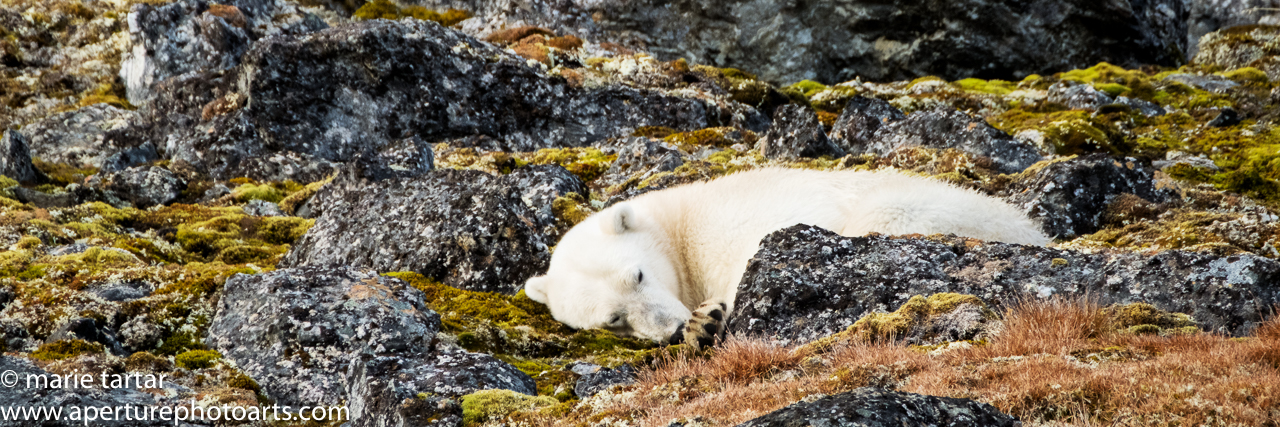
“Sleeping beauty” bear: the primary activities of polar bears we observed were sleeping, walking and feeding.
From time to time, it stirred, glanced our way to a round of motor drive volleys, then settled back down into its temporary shelter and resumed snoozing. The boat was initially positioned perpendicular to the rock face. Zodiac driver Ludo had the best seat in the house, at the end of the bowsprit. Depending on which way the boat drifted, we shifted from side to side, until finally the boat was parallel to the shore, and lined with a string of camera-hoisting passengers.
Late morning, we convened in the salon for a presentation by Thor Larsen. He is a remarkably vital elder statesman of in-the-field polar bear research, beginning in the mid-1960s, at which time the polar bear population was estimated at 2500 animals. At that time, it was not known whether polar bears were local populations or were circumpolar, as some postulated. Data from early research focused on locating polar bear dens, often on skies. This work led to a landmark, international agreement , adopted in 1973. This multi-lateral agreement banned the hunting of polar bears, except for Inuit populations with a historical reliance on polar bear hunting. This exception is controversial and many, including Morten, think it should be reconsidered.
Pressures on polar bears include declining numbers of seals, their preferred food. Pollution is also suspected to be a contributing factor. I was amazed to hear that Inuit women are advised not to breastfeed due to high heavy metal ingestion.
By tooth sampling, the oldest polar bear is 25 years old, with average lifespans 15-18 years.
While we were listening to Thor, there was a sudden crack of thunder. Where I was sitting in the salon, I was in perfect position to see out of the porthole that a huge face of nearby Smeerenburg glacier was calving. The boat was aligned with the glacier face, and the engine quickly was gunned to compensate for the ensuing wave action.
In the afternoon, it was Nikita’s turn to present the sobering status of polar bear populations. What seems clear is that polar bear populations are declining, and worse yet, the proportion of reproducing females and number of young produced is declining at an unsustainable rate. Surprisingly, although both global warming activists and poo-poo-ers make use of polar bear imagery in their campaigns, Nikita made the case that polar bears, while the only terrestrial mammal adapted to life on polar ice, can and have through previous ice ages and interglacial periods, adapted to life in coastal regions. The problem that arises is that this inevitably will bring the bears into increasing contact with humans.
Also surprising and disturbing was the information he presented on the impact on polar bear numbers, since the ban on polar bear hunting of 1973, of the RISE in commercial hunting, in the name of maintaining “traditional native practices”. Coupled with the decreasing birth rate, his prediction is that polar bears are on an inevitable trajectory toward extinction within one generation (20-25 years), UNLESS a moratorium is declared on commercial hunting. Given that this trade seems to be driven by insatiable Chinese demand for pelts, the situation seems bleak. In Longyearbyen, there was a store with fur products, including polar bear pelts, which are imported from Canada.
Organizations, including the World Wildlife Fund, while denouncing global warming as threatening polar bear habitat, simultaneously support maintenance of existing hunting exclusions.
We were banished from the salon towards evening, to allow the staff time to present an extra special buffet, with multiple salads and meats (including a foil packet of salmon with vegetables), as well as fruit skewers, fruit salad in champagne and an amorretto mouse cake.
Saturday, September 9, 2017
The morning was a little rough, with some rolling sending most people back down to their cabins after a later (9 am) breakfast.
After lunch, we headed ashore. A whitish patch could be seen from the ship to be a reindeer carcass, on which Arctic foxes were feeding. This site is known for reindeer, which we did see, but Morten declared in 40 landings here he had never seen Arctic foxes outnumbering reindeer.
When we landed, before heading off toward the carcass, a pair of rangers approached and briefed Morten on a polar bear sighting around the corner. It was being watched by a zodiac from another ship. He communicated with our ship, which was charged with monitoring the bear’s whereabouts. Initially, it was sleeping, and later was reported to be walking, moving away from us.
At least 5 Arctic foxes were scampering about, lustily feeding on the reindeer carcass. The reindeer included a pair at the base of Mount Alkhornet, both with a rack of red horns, with a more distant family group of 4, silhouetted against the sea. The reindeers engaged in vigorous sparring, locking horns, then settled peaceably down in the grass to nibble.
We turned our attention again to the carcass and gradually closed the gap until we were close enough for full frame shots. As we regrouped and crossed a little stream back to the landing site, an update from the ship indicated that the bear was on the move toward the carcass, passing us, higher up the slope. The bear made a leisurely but determined trajectory for the carcass, displacing the foxes, which hung around hopefully at a little distance.
Back on the boat, we watched the bear feed until its face was stained red. Eventually, it retreated and the foxes darted back to the carcass.
Sunday, September 10, 2017
Our last full day on board was filled with a nice morning at an interesting glacial moraine moonscape in Ekmanfjord, a branch of Isfjorden, called Coraholmen. It was a calm, cold and sunny morning, perfect for a drone launch from the shore-no metal or rigging to affect the drone. However, both Steve and Gerry encountered occasional error messages, maybe due to our proximity to the North Pole? Steve managed to obtain some beautiful images, while Gerry was spooked and bagged the effort early.
By the cruise’s end, there remained but 2 items on my Arctic wishlist, namely polar bears on ice (coming earlier, during summer, would be more prime season, but too early for the golden light we experienced) and the Northern Lights. We were so far north, it basically never got dark enough to see the aurora borealis. Steve, Greg and I were off the following day on the final leg of our journey, to another scenic section of Norway, Lofoten, while the rest of our crew and our new friends started their journeys home, replete with Arctic images and memories.
-Marie
In Lofoten, our Northern Lights fantasy was spectacularly realized, beyond my wildest dreams. For a vicarious experience, here are links to Photo Focus articles I wrote about the experience:
https://photofocus.com/2017/12/07/lovely-lofoten-a-photographers-dream-destination-part-1/
https://photofocus.com/2017/12/11/shooting-the-northern-lights-in-lofoten-lessons-learned-part-2/

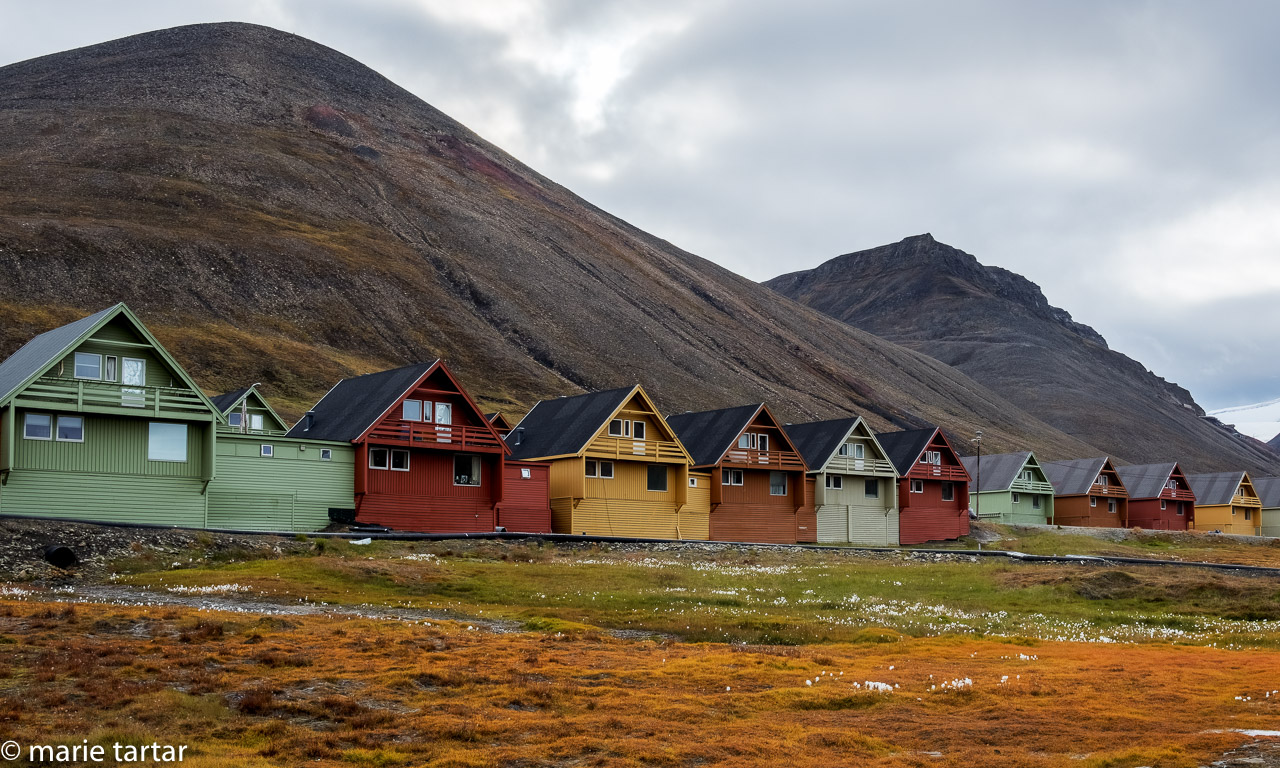
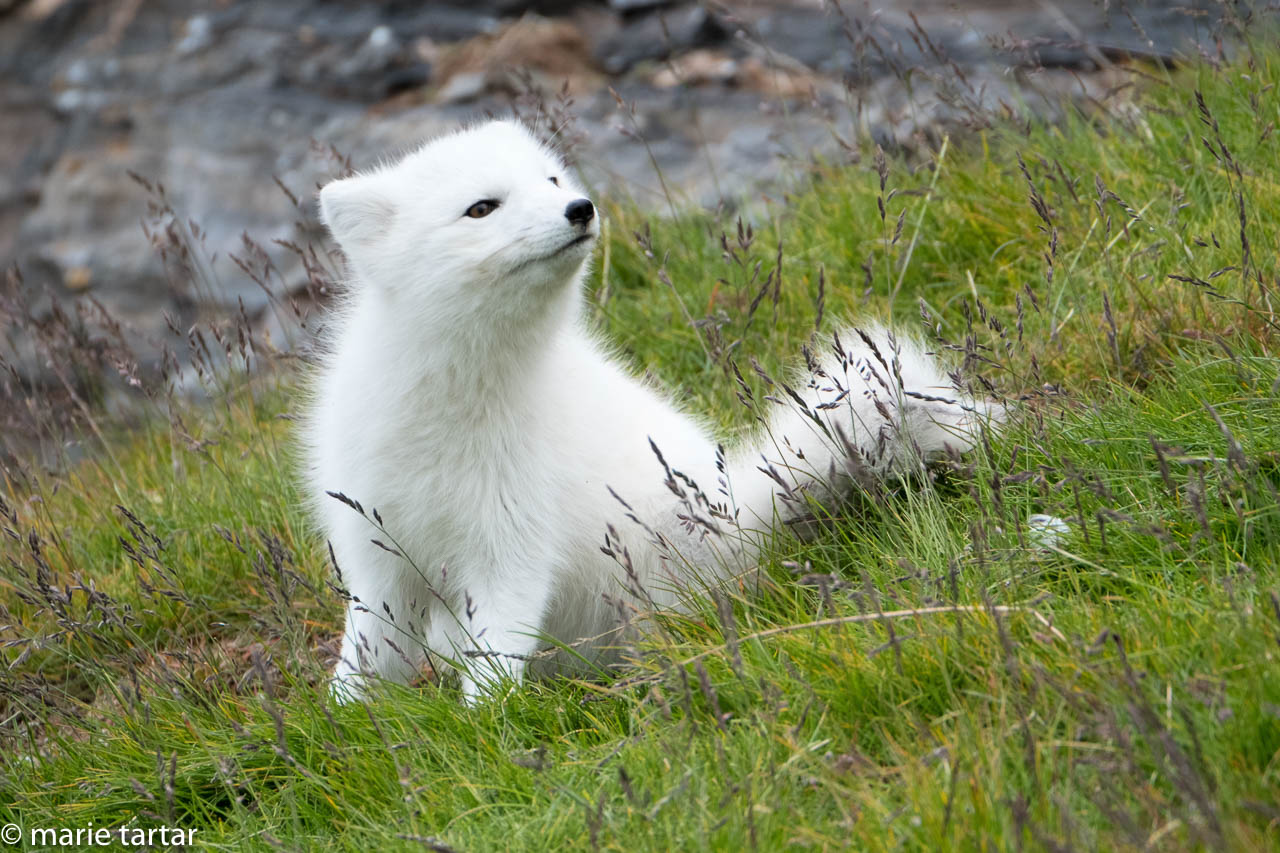

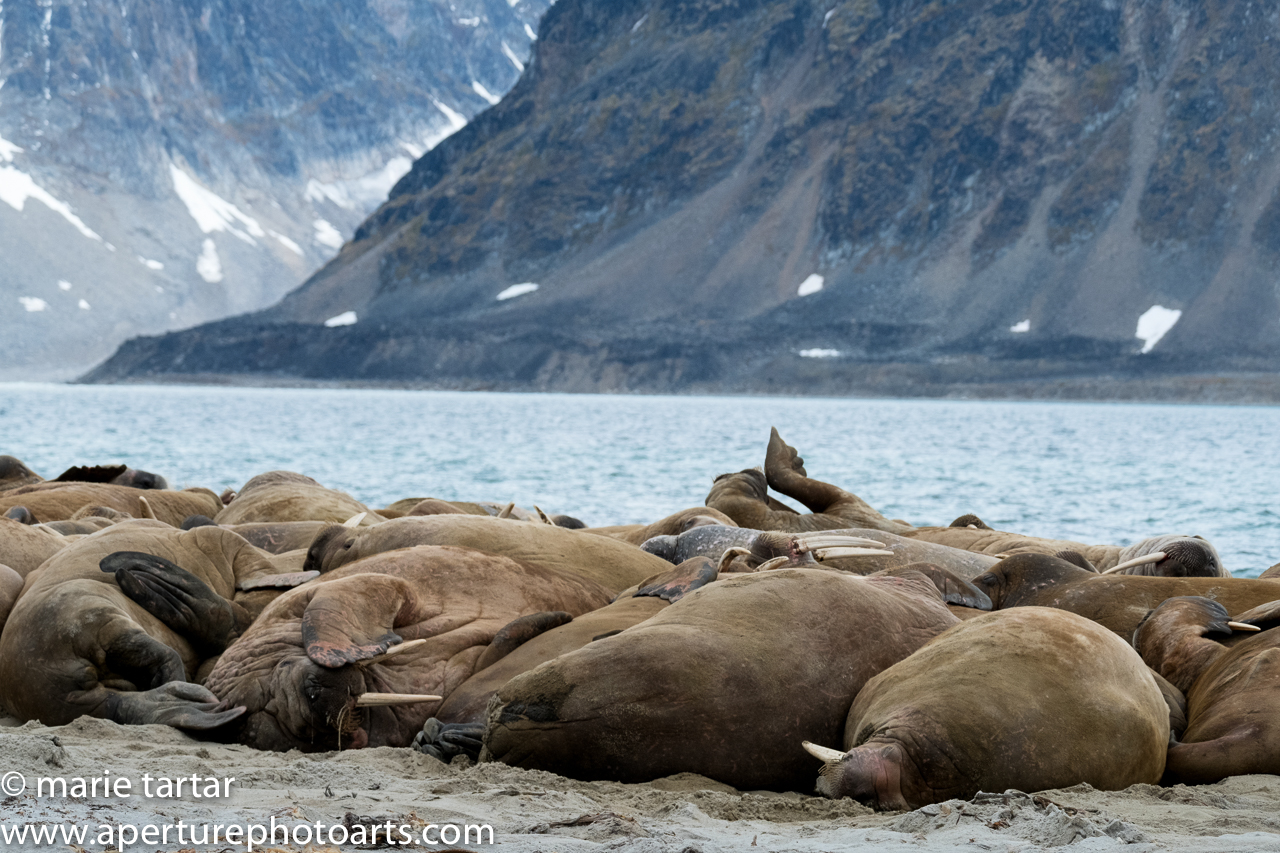
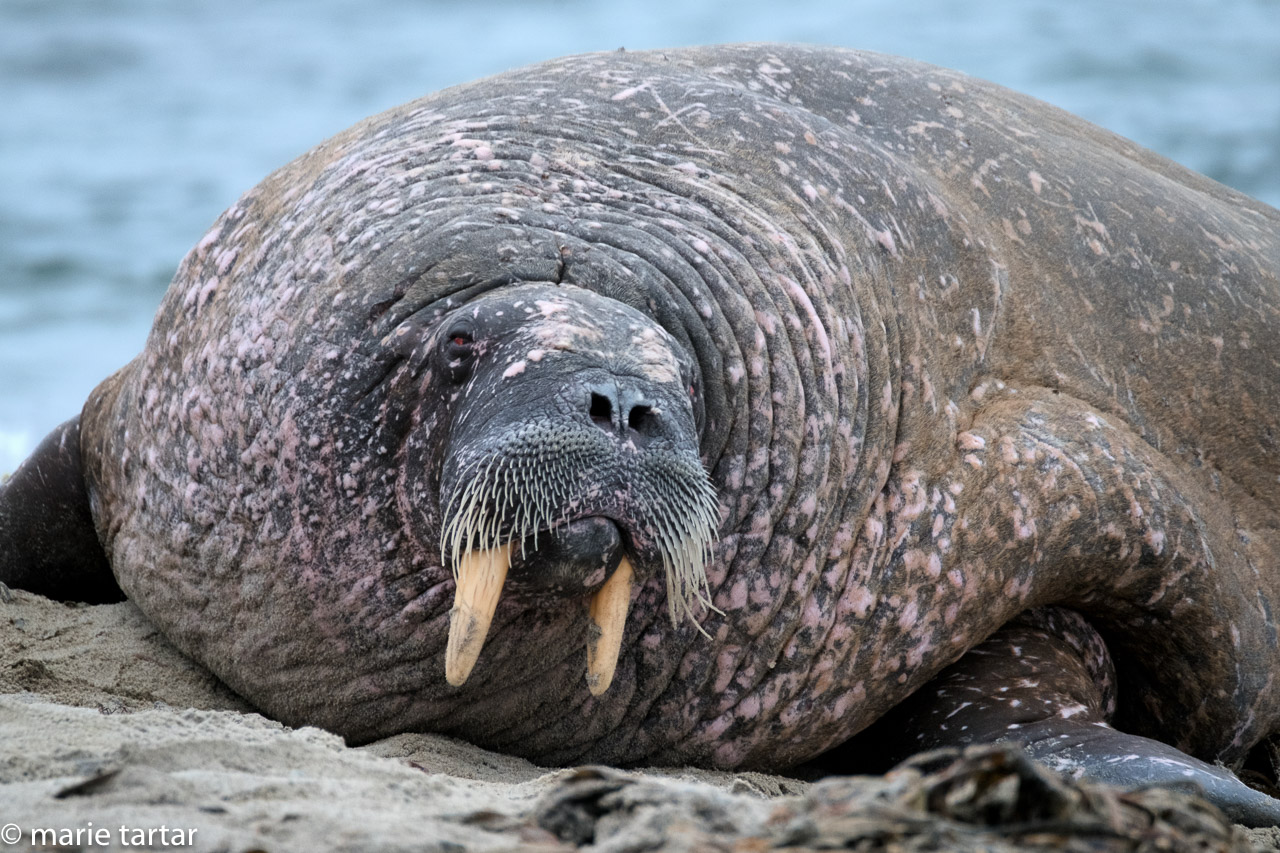



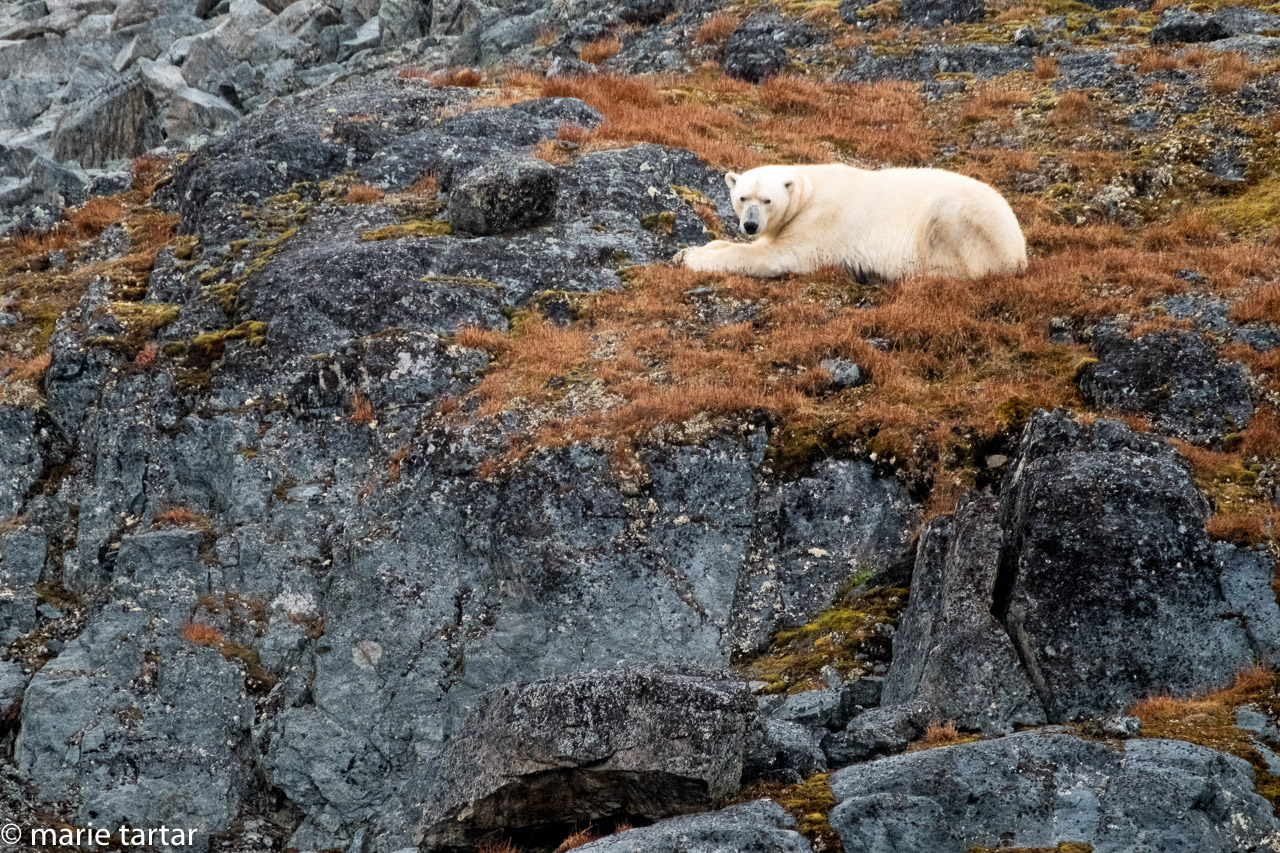
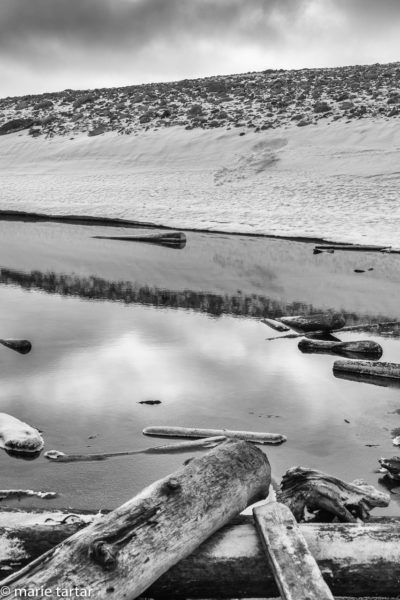
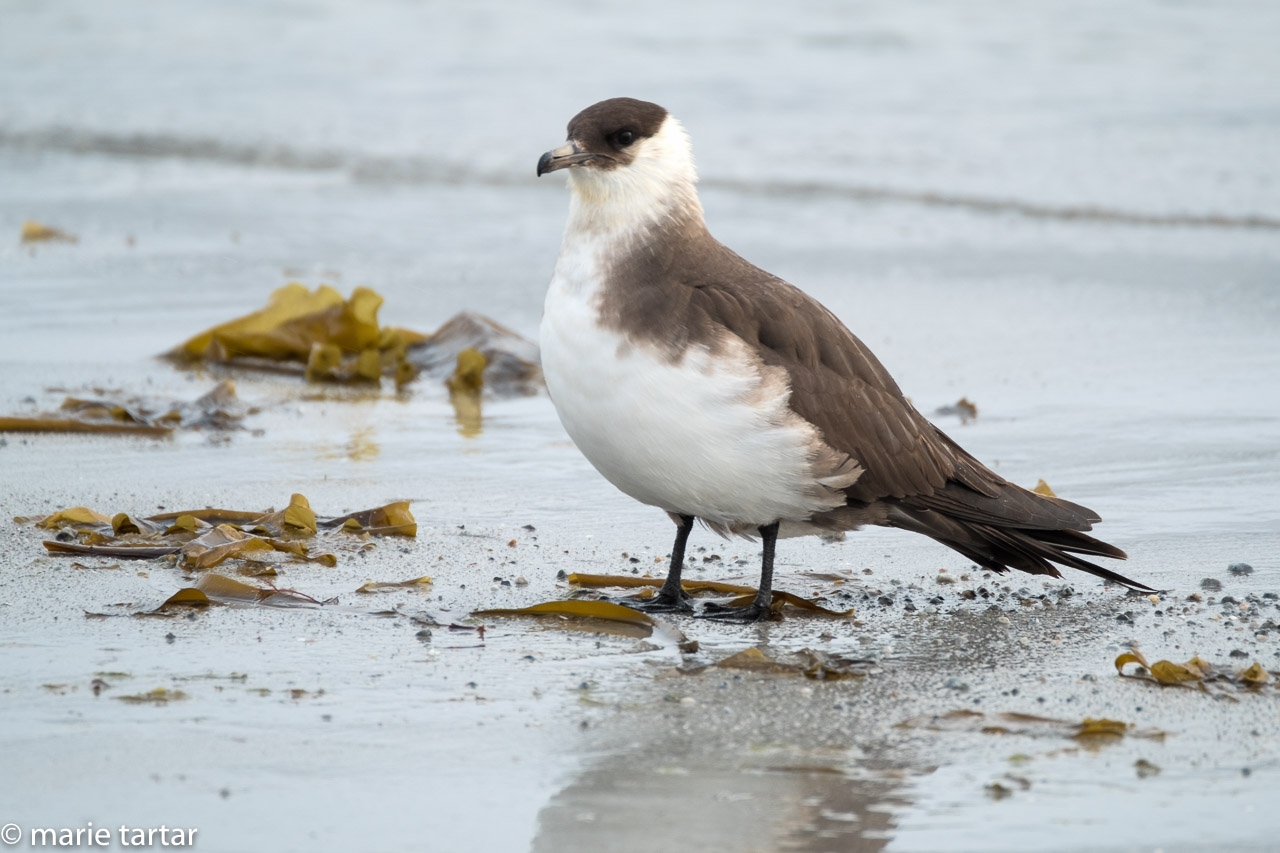

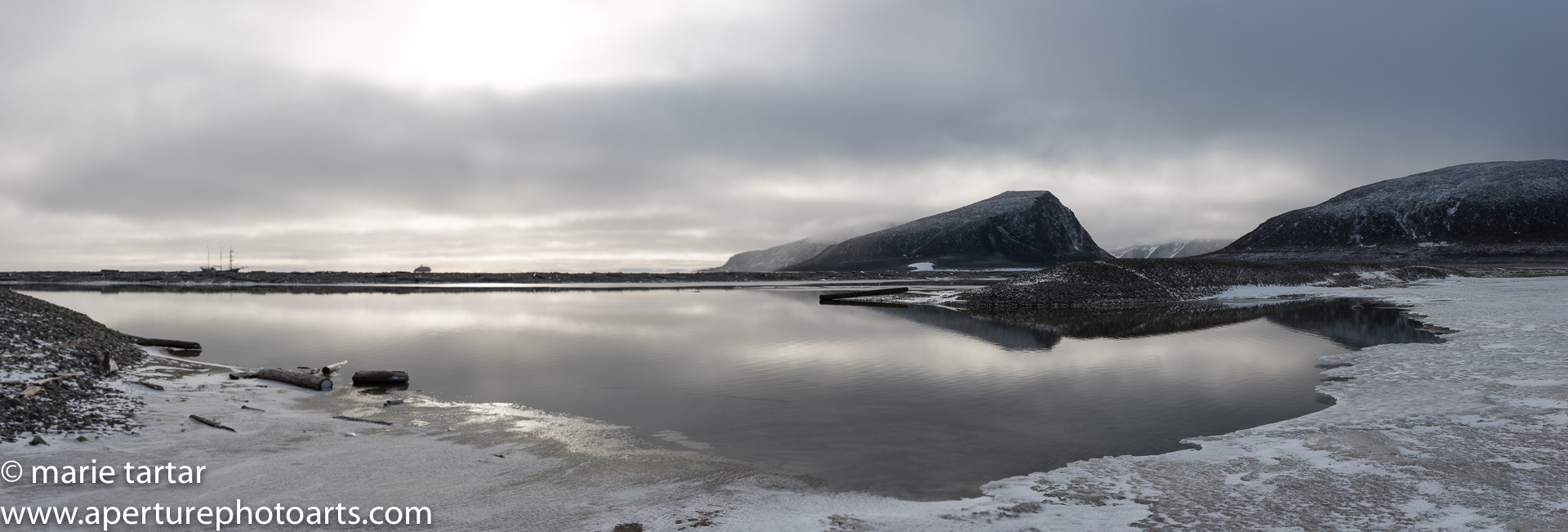
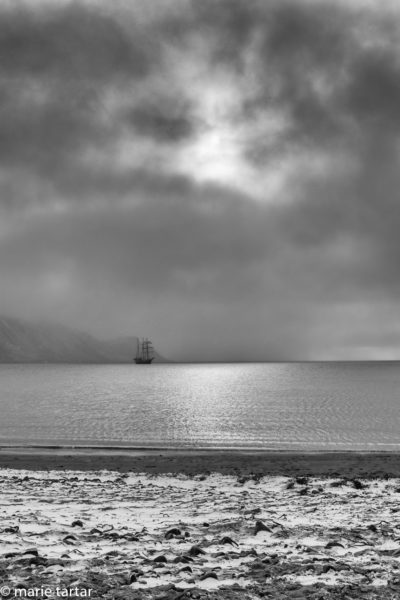




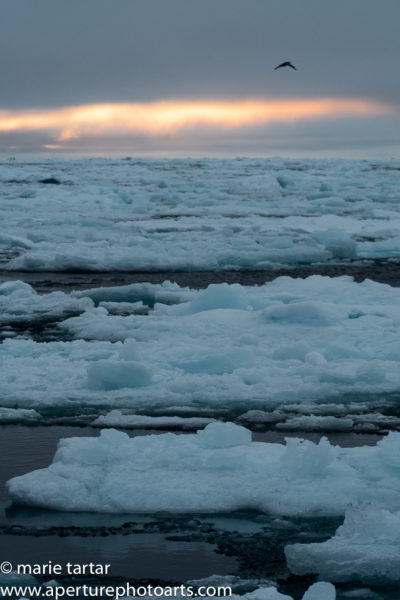
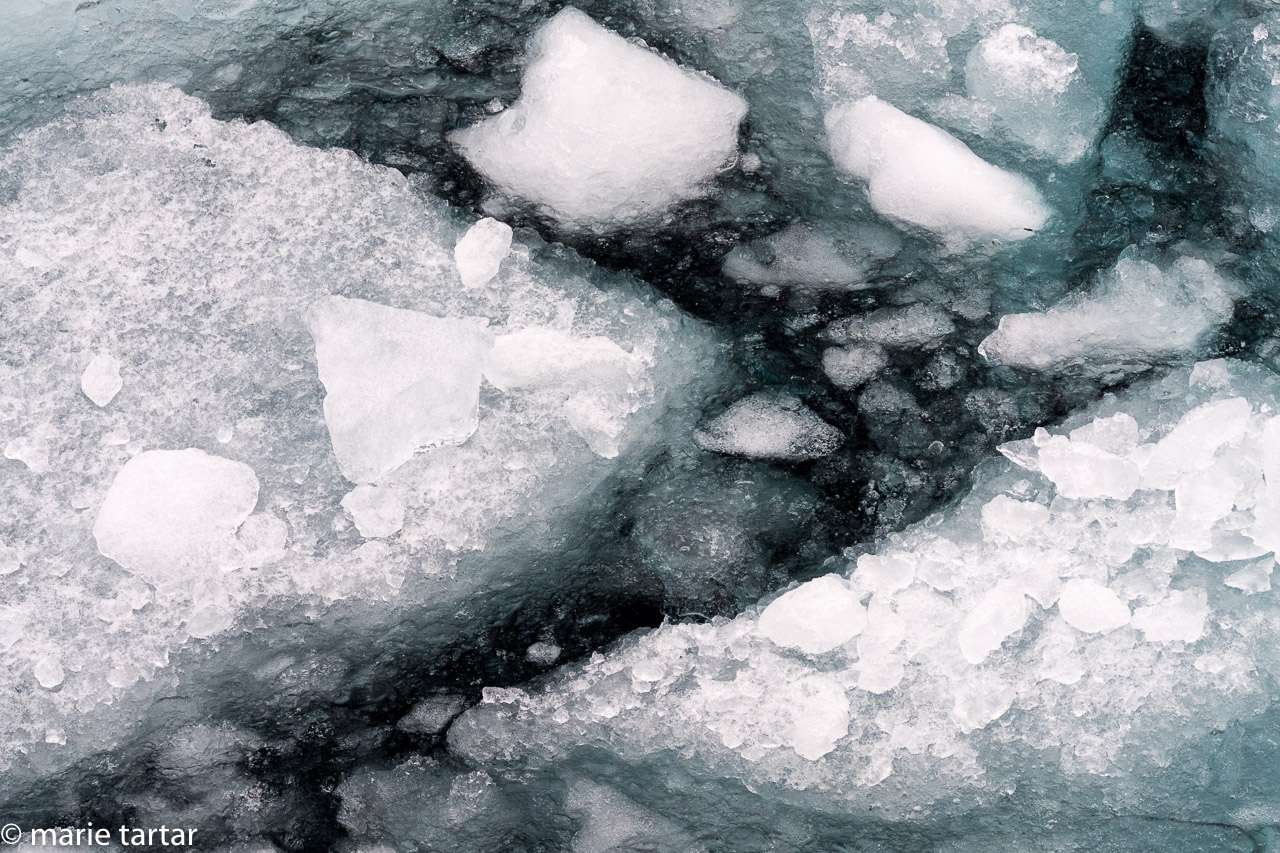
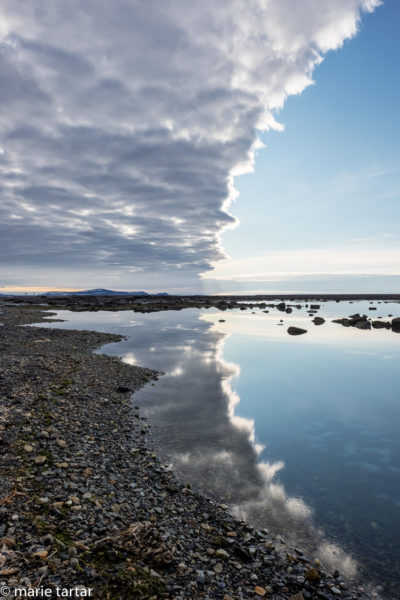
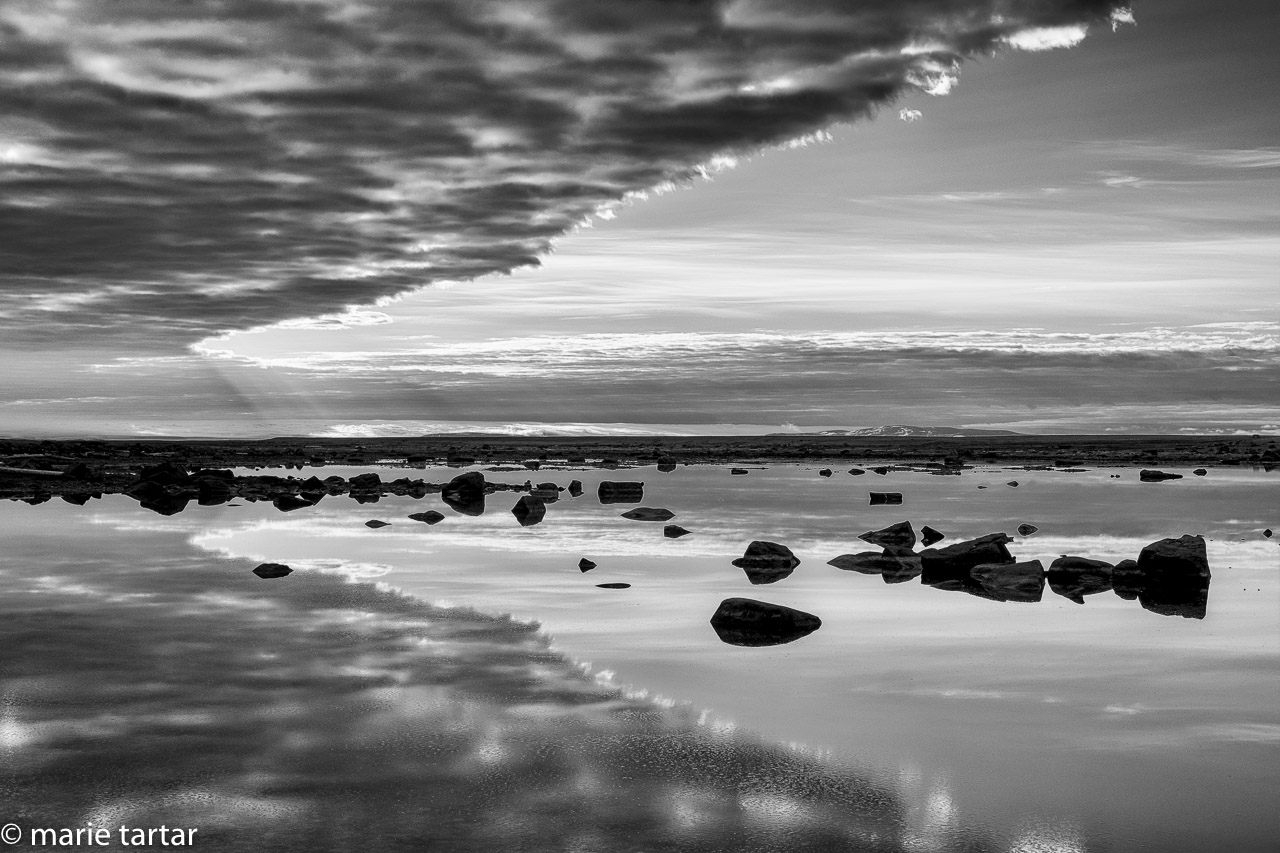

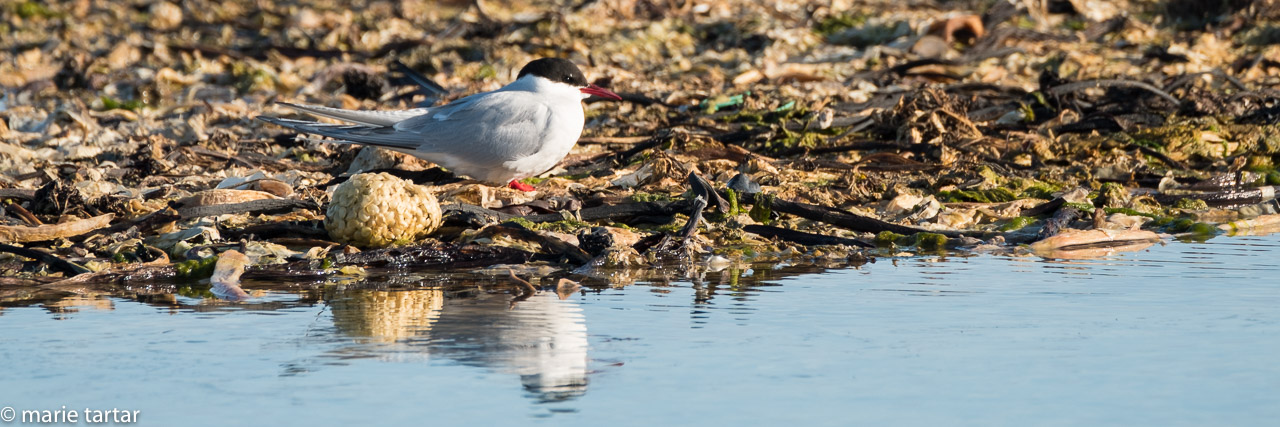
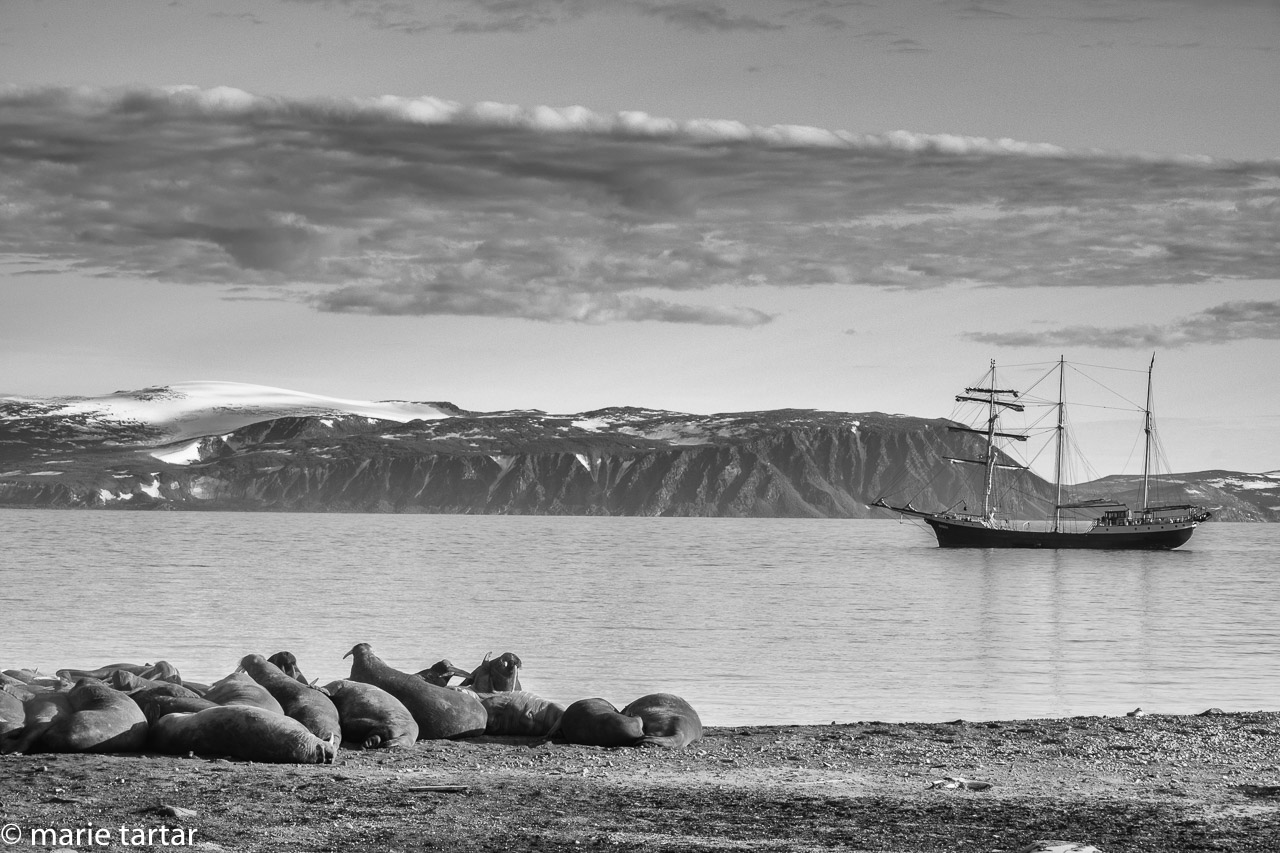
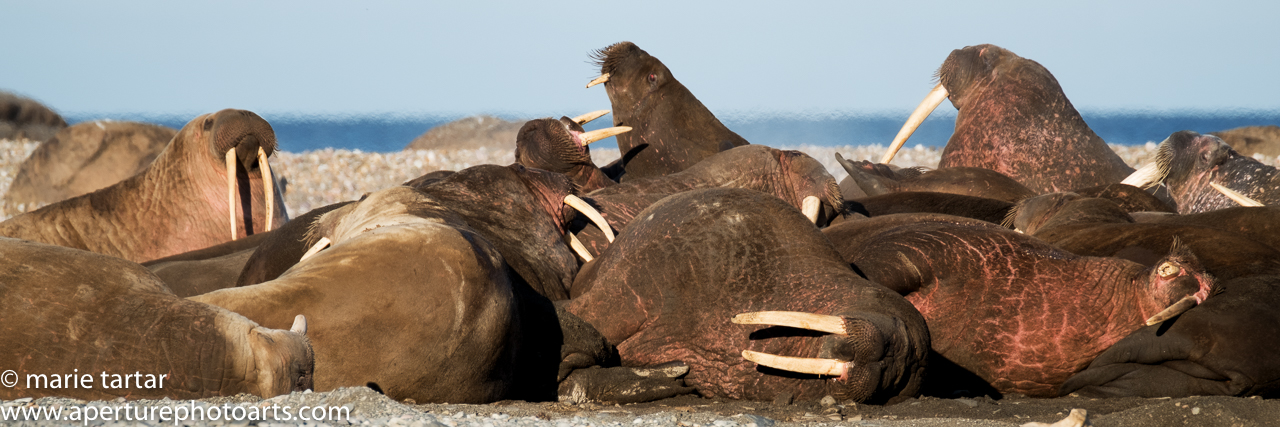
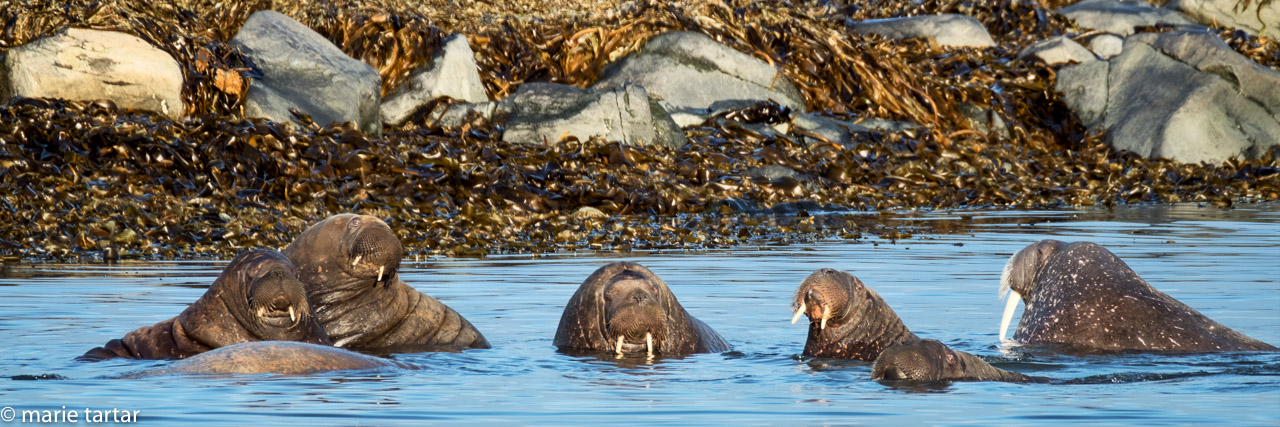
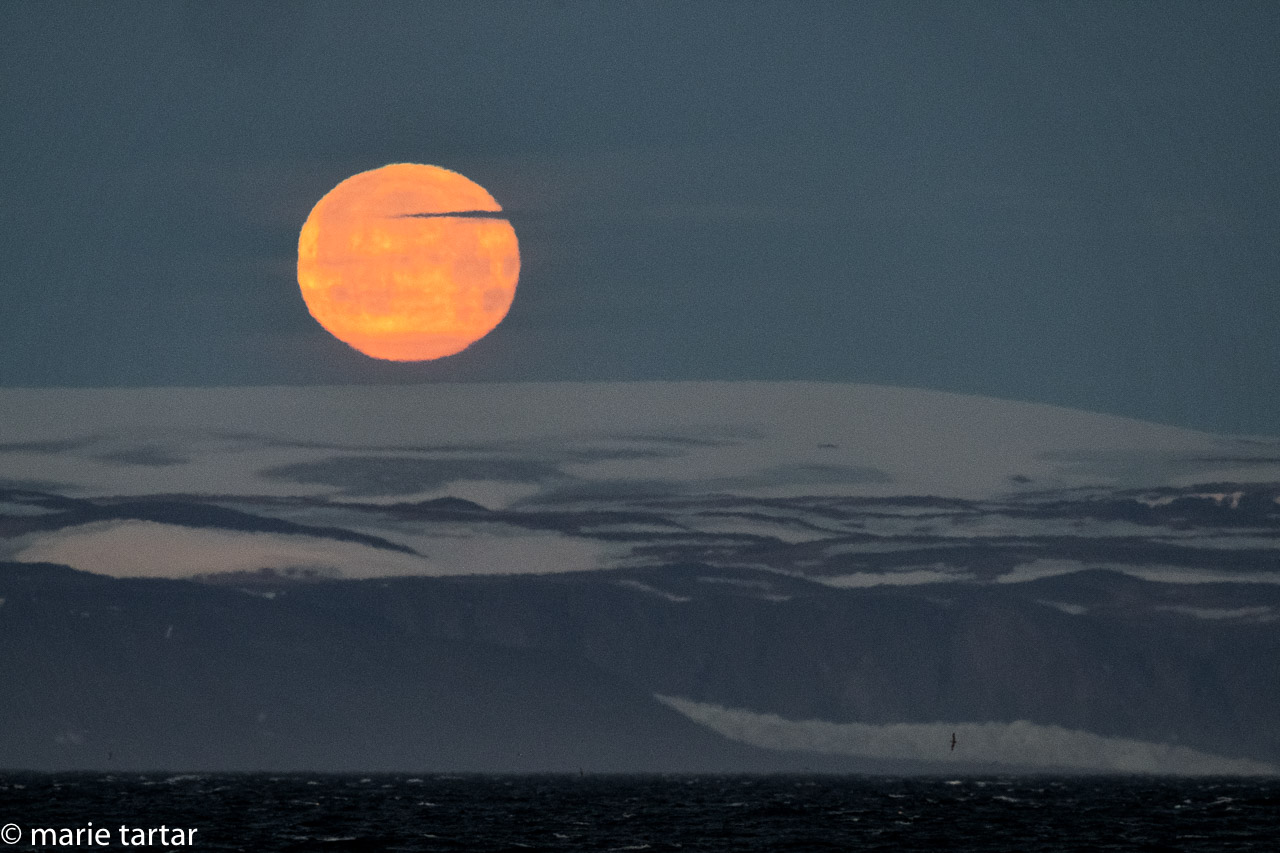

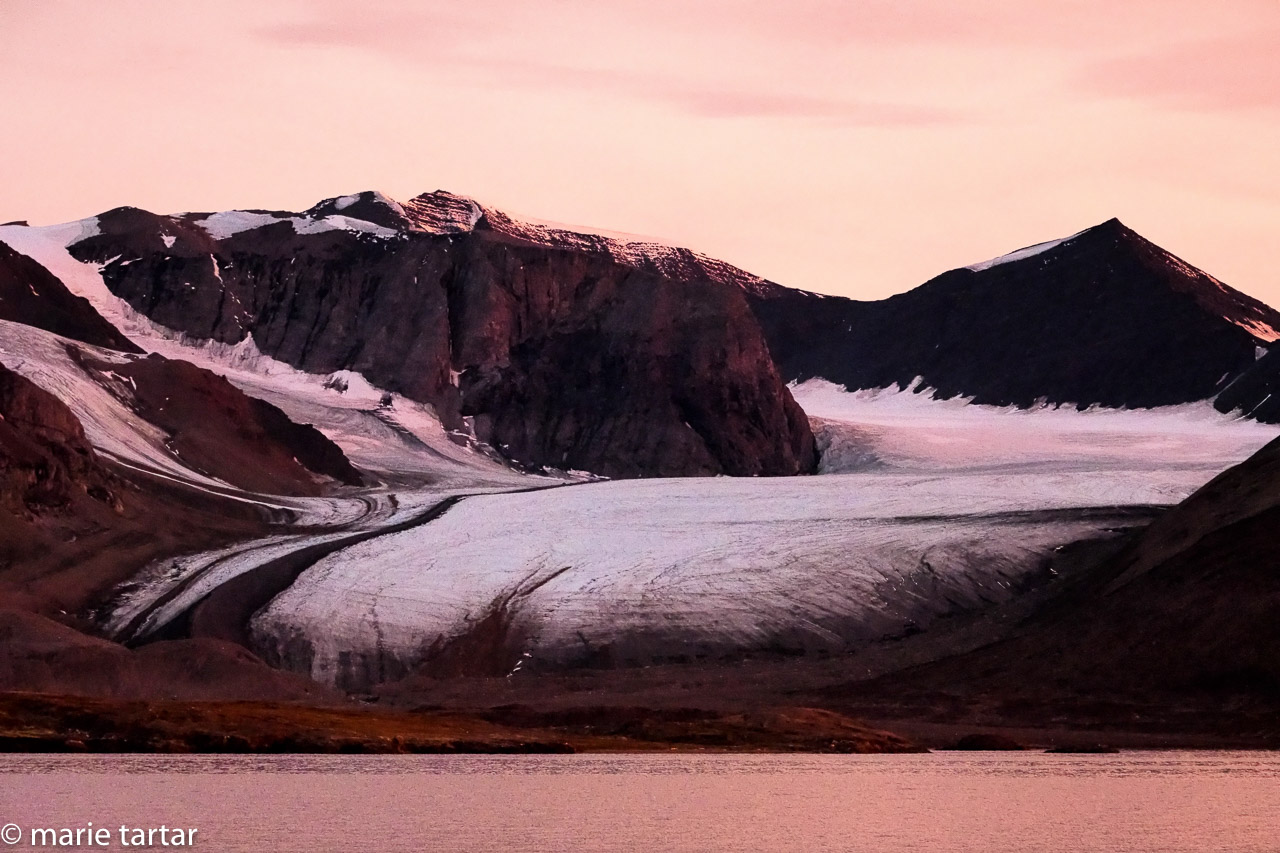

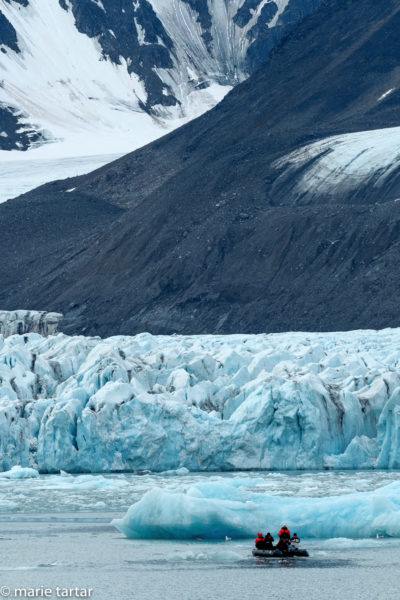
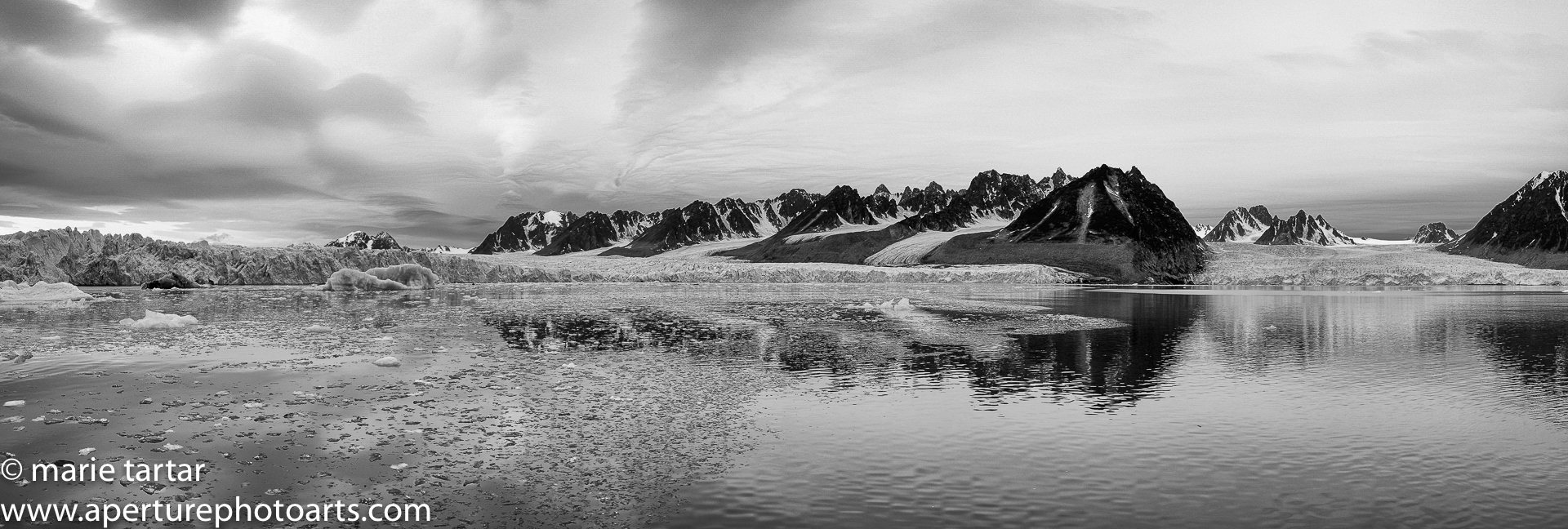

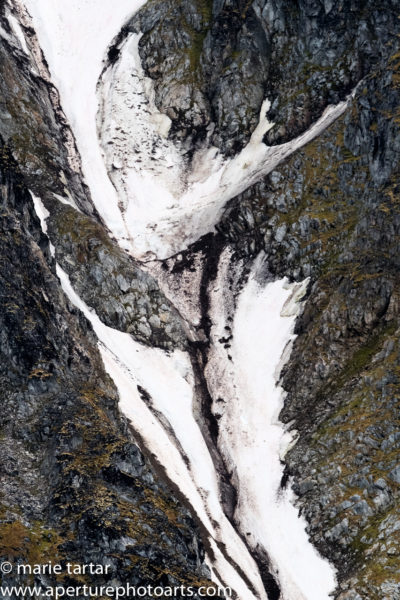



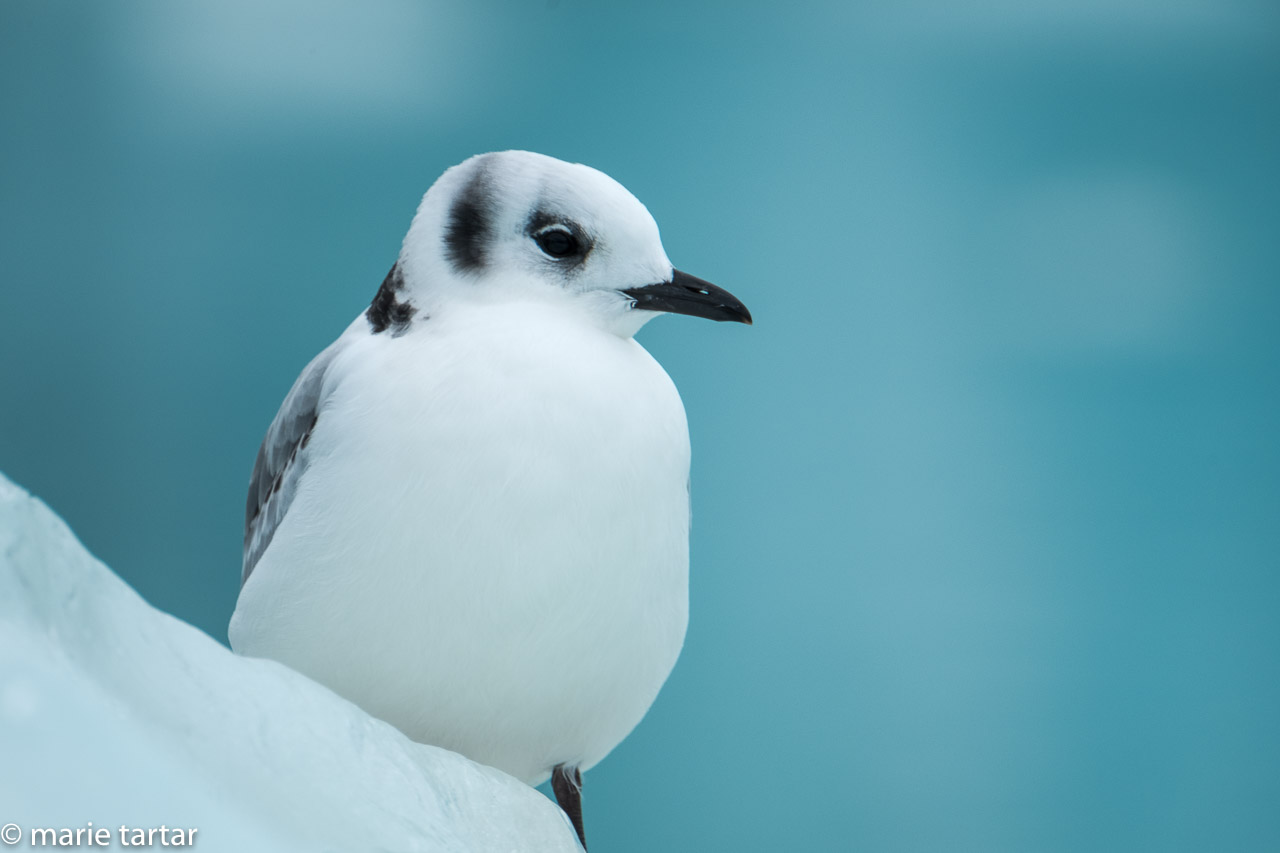
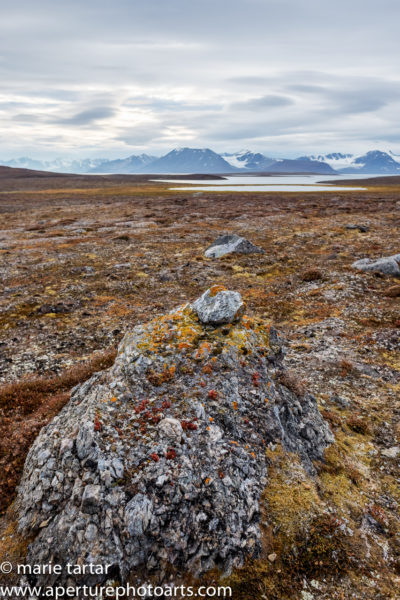
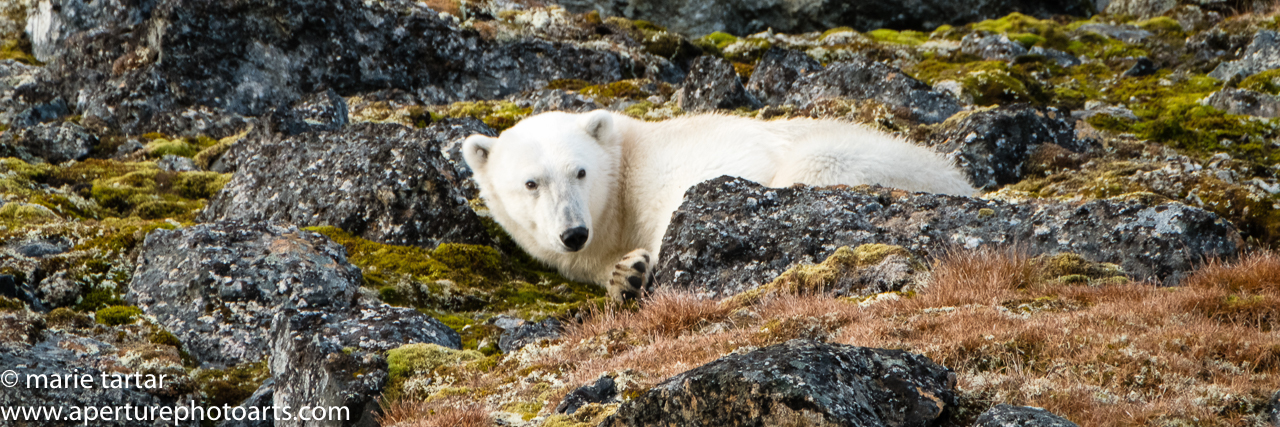
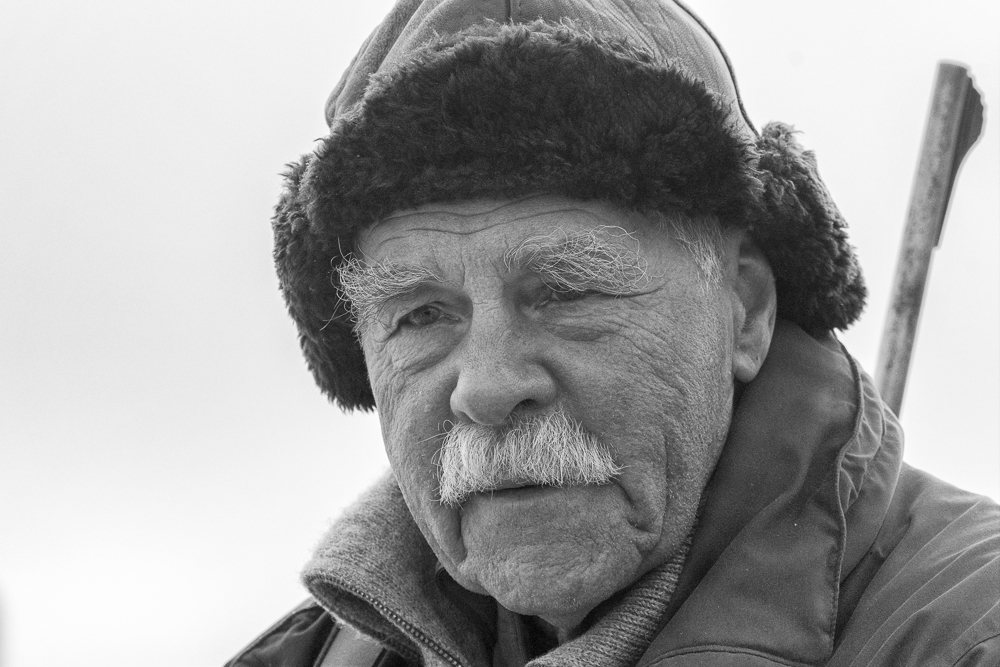
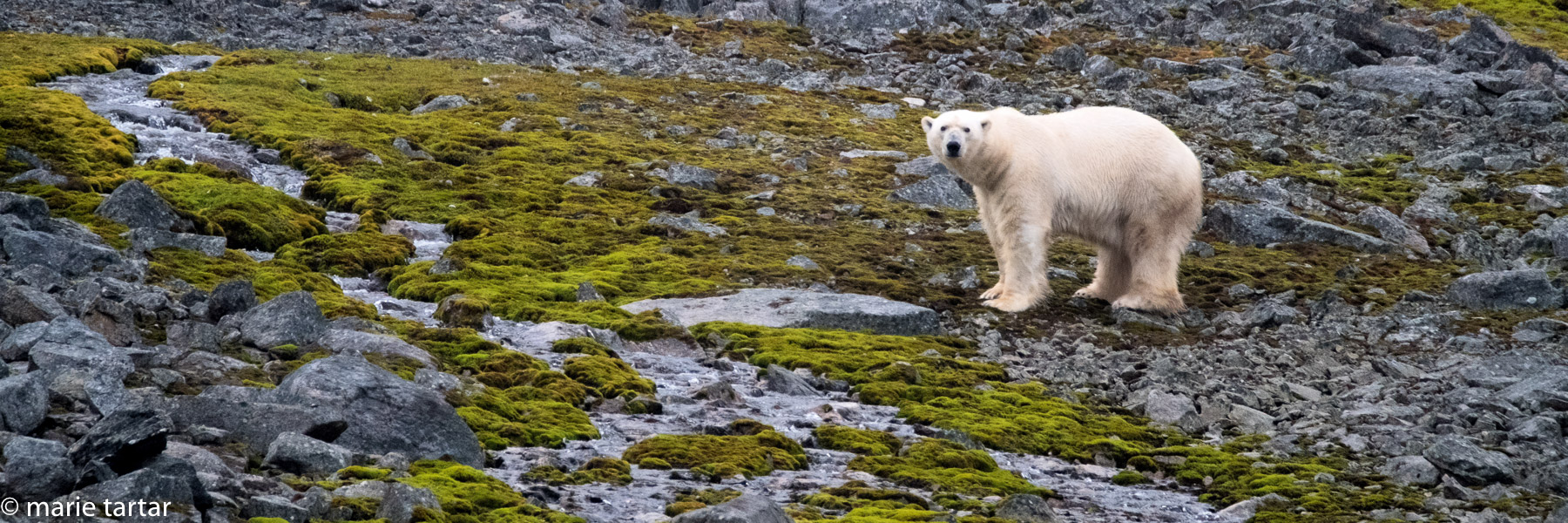
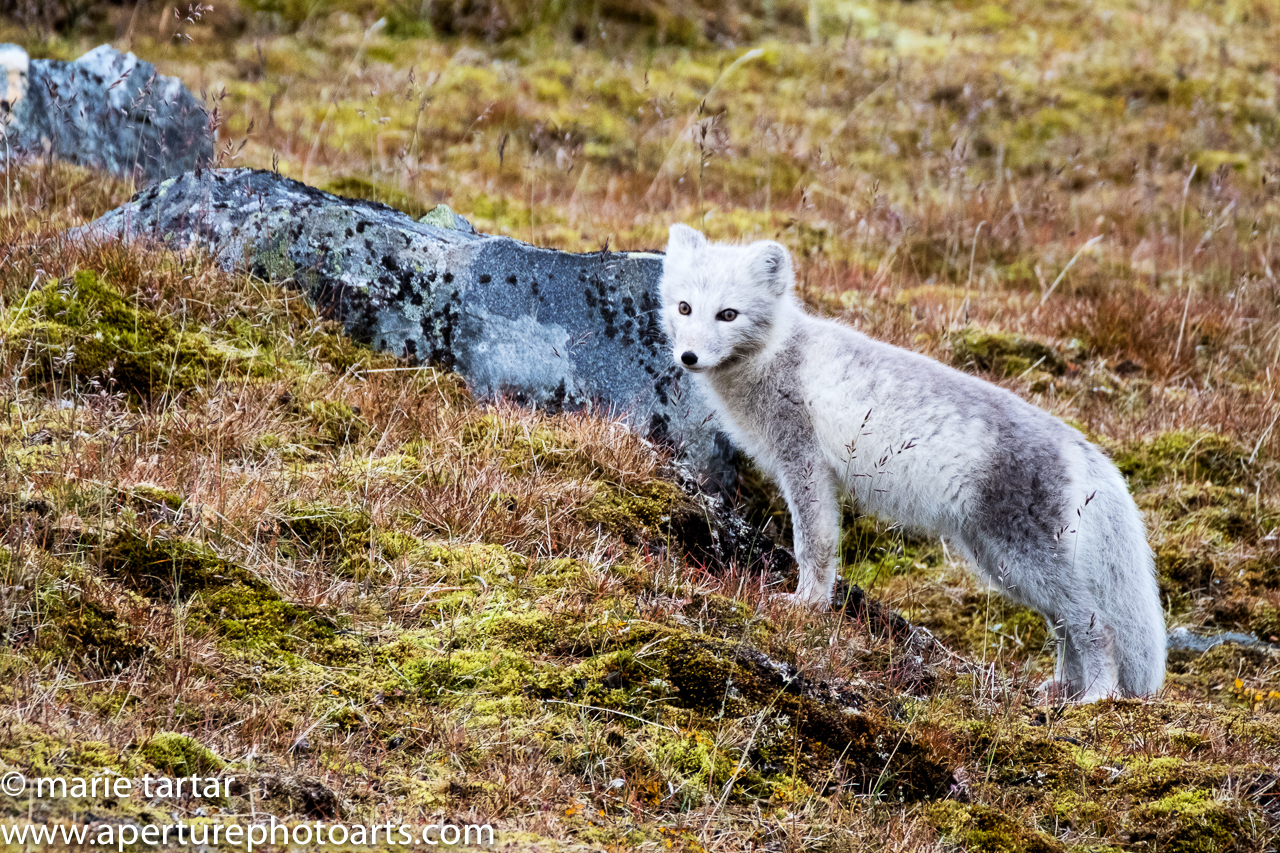
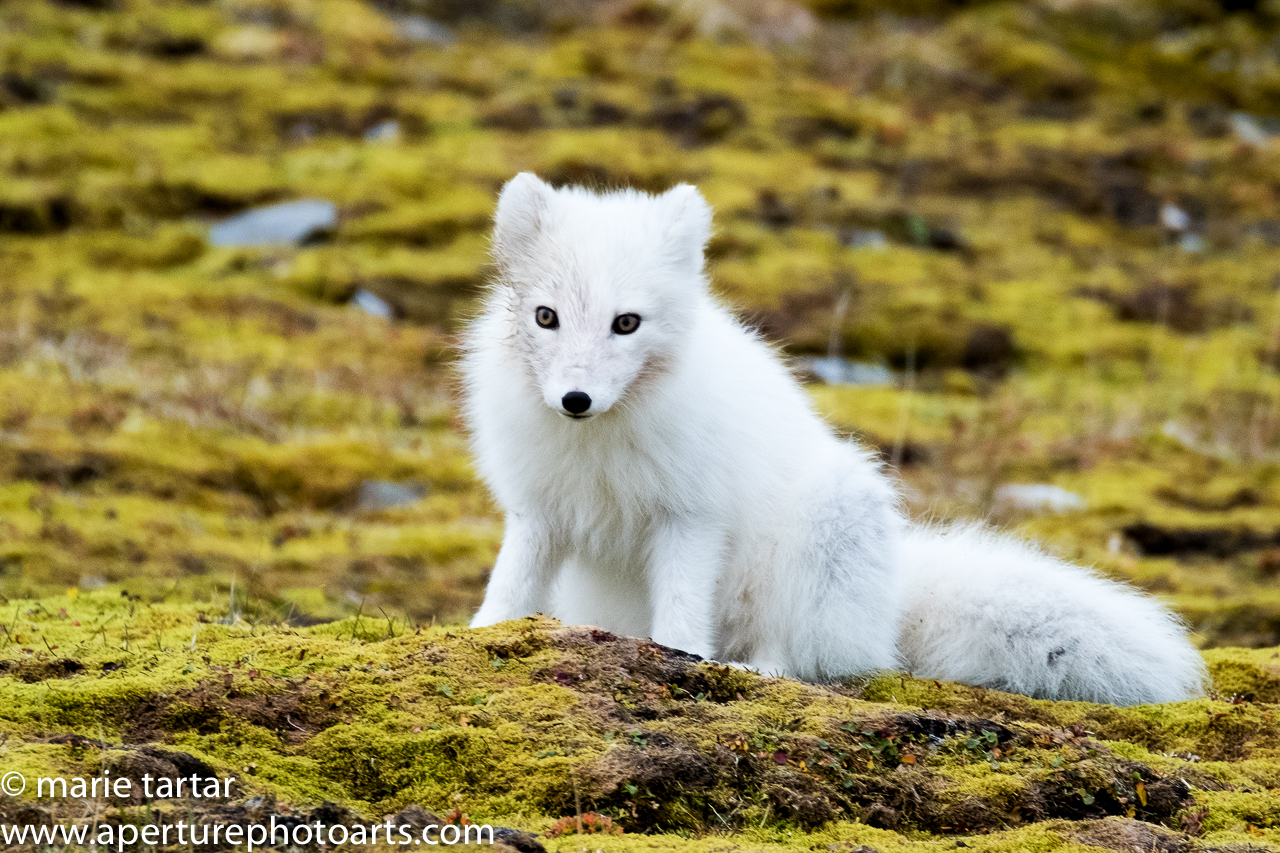
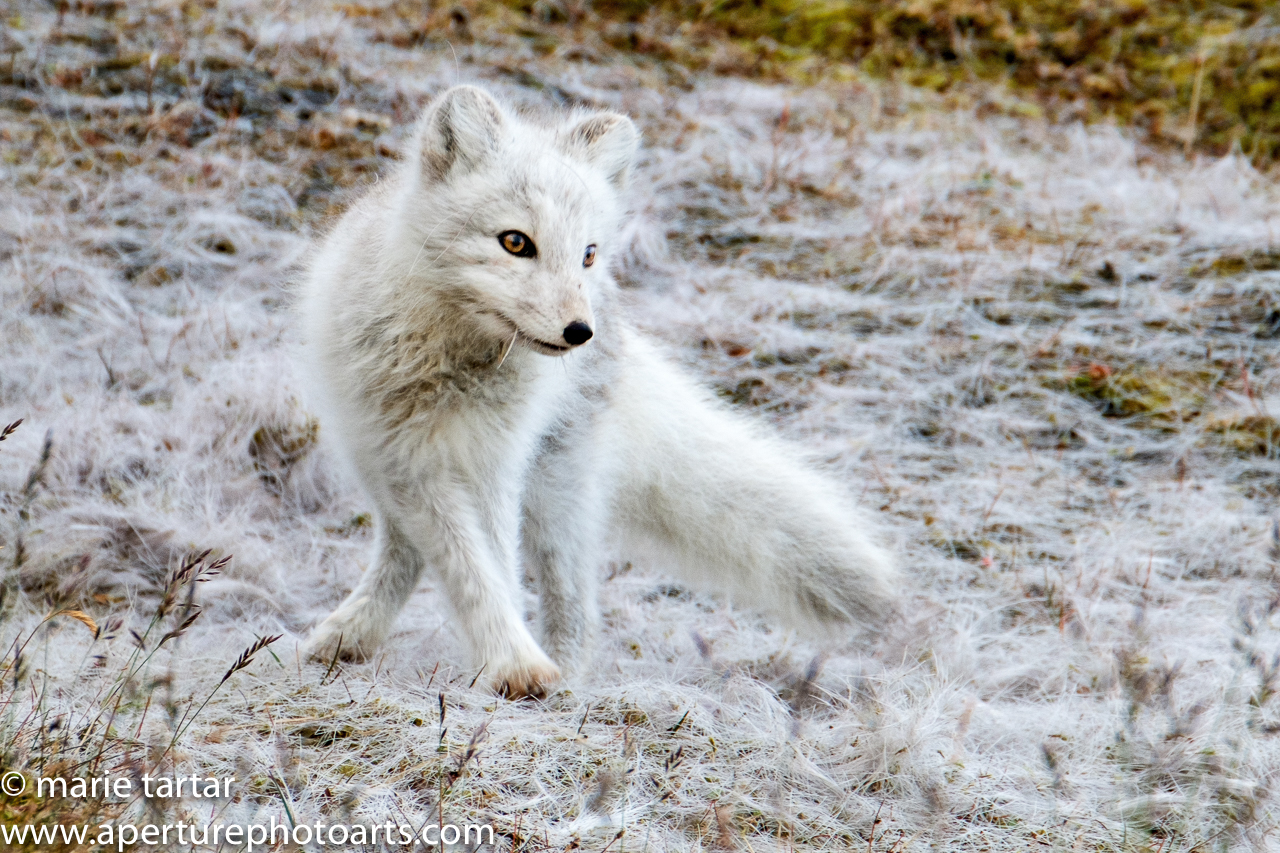

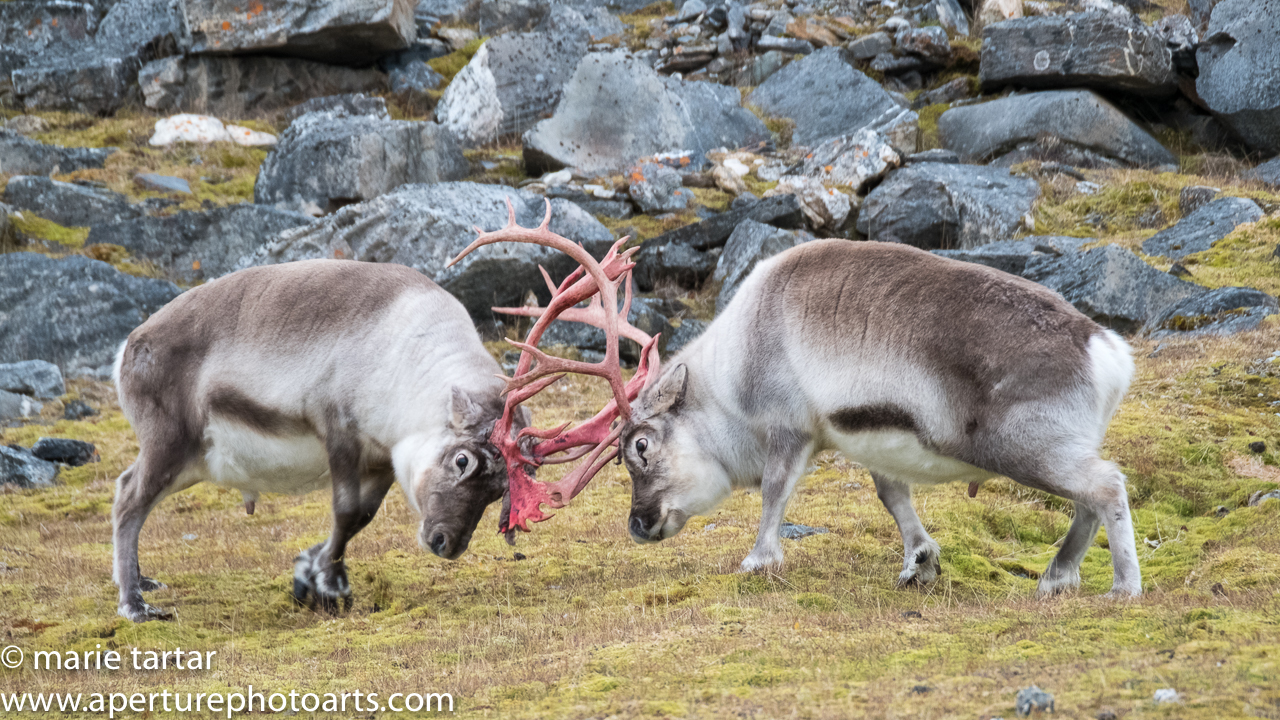
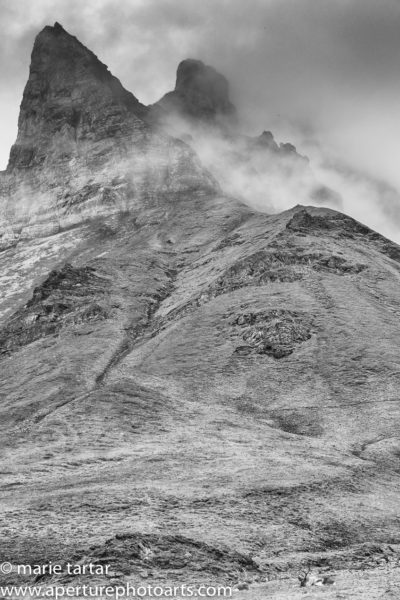

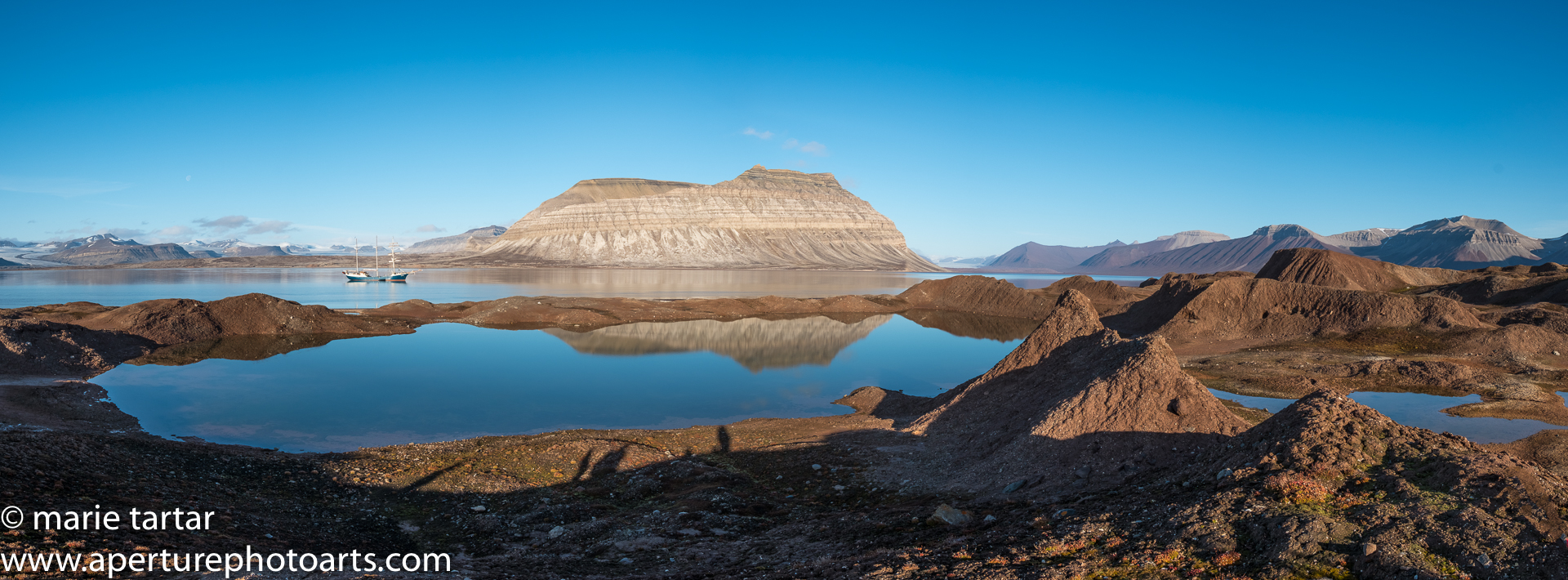
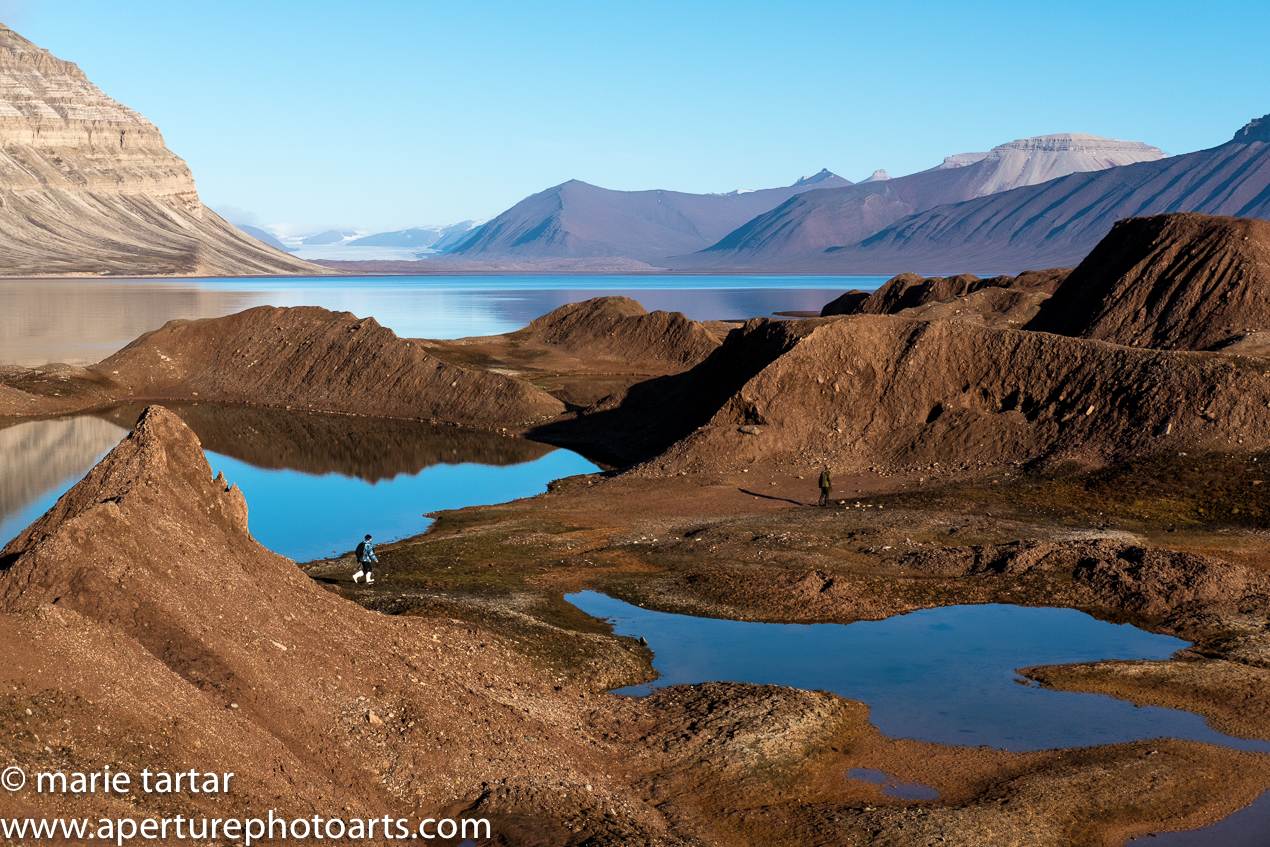
It is just beautiful, amazingly beautiful. You’ve seen Polar bears and other animals in nature, while we are not yet able to go see the baby panda in Tokyo zoological park! Can’t wait to read your next post.